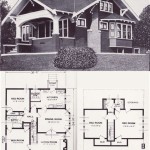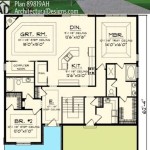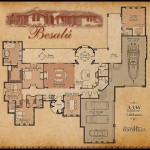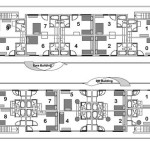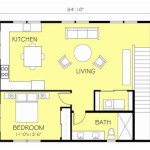Finding Floor Plans for an Address: A Comprehensive Guide
Accessing floor plans for a specific address can be a valuable asset for various purposes. Whether you are a prospective buyer, a renter, a contractor planning renovations, or simply curious about a property's layout, understanding how to locate these architectural blueprints is crucial. This article explores different methods to find floor plans associated with an address, highlighting the potential sources and the challenges one might encounter.
Floor plans are scaled diagrams showing the arrangement of rooms within a building, typically viewed from above. They often include details such as wall dimensions, door and window locations, and the placement of fixtures like sinks, toilets, and appliances. Having access to this information can provide a comprehensive understanding of the space and its functionality.
Utilizing Public Records and Government Resources
One of the primary avenues for obtaining floor plans is through public records. Local government agencies, such as city or county planning departments and building permit offices, often maintain archives of construction documents. These documents may include floor plans submitted as part of the permitting process.
The accessibility of these records varies depending on the jurisdiction. Some municipalities offer online portals where one can search for property-related documents using an address or parcel number. These portals allow for convenient remote access, enabling users to download or view scanned copies of floor plans and other relevant paperwork. Other jurisdictions may require a physical visit to the government office to request access to the records.
When searching public records, it's essential to be prepared with accurate information about the property. This includes the full address, including street number, street name, city, state, and zip code. If available, the parcel number or property identification number (PIN) can also be beneficial in narrowing down the search. It is also important to know that the availability of floor plans in public records often depends on the age of the building and the local regulations in place at the time of construction. Older buildings may not have readily accessible floor plans, especially if they predate modern record-keeping practices.
Furthermore, even if floor plans are available, there may be limitations on their usage. Public records are typically accessible for informational purposes, but commercial use or reproduction may be restricted without proper authorization. It is critical to understand and comply with any copyright laws or regulations associated with the floor plans.
The process of accessing public records can sometimes involve fees. Some jurisdictions charge for copies of documents, while others may have fees associated with accessing online portals. It is advisable to inquire about any applicable fees before initiating the search.
Contacting the Property Owner, Builder, or Architect
Another potential source for floor plans is the property owner. If you are considering purchasing or renting a property, reaching out to the current owner or landlord can be a direct way to inquire about the availability of floor plans. They may have copies of the original construction documents or be able to provide information about where to obtain them.
In the case of newer constructions, contacting the builder or developer who constructed the property can be a viable option. They often retain copies of the architectural plans and may be willing to share them with prospective buyers or renters. Similarly, if the property underwent significant renovations or additions, the architect or contractor involved in the project may possess floor plans reflecting the updated layout.
When contacting these parties, it's essential to present a clear and professional request. Explain your reasons for needing the floor plans and be prepared to provide proof of your interest in the property, such as a purchase agreement or lease application. It is also important to respect their privacy and any confidentiality agreements they may have in place.
However, it is important to acknowledge that property owners, builders, and architects are not always obligated to provide floor plans. They may have their own reasons for withholding this information, such as proprietary concerns or legal restrictions. Therefore, while this approach can be fruitful, it is not always guaranteed to yield the desired results.
Even if the property owner possesses floor plans, they may not accurately reflect the current state of the property. Over time, modifications or renovations may have altered the original layout, rendering the existing floor plans obsolete. In such cases, it may be necessary to obtain updated floor plans or commission a professional survey of the property to create an accurate representation of the current configuration.
Exploring Online Databases and Real Estate Platforms
The internet offers a variety of online databases and real estate platforms that may provide access to floor plans. These resources often compile property information from various sources, including public records, real estate listings, and architectural firms.
Real estate websites and online listing services frequently include floor plans as part of their property listings. These floor plans are typically provided by the real estate agent or the seller to showcase the property's layout and features. While these floor plans may not always be as detailed or accurate as official architectural blueprints, they can provide a general overview of the space.
Several websites specialize in providing floor plans for residential and commercial properties. These platforms often allow users to search for floor plans by address or property type. Some may offer free access to basic floor plans, while others require a subscription or payment for more detailed or specialized plans. It is advisable to carefully evaluate the credibility and accuracy of these sources before relying on the information they provide.
Online architectural databases and design repositories can also be valuable resources for finding floor plans. These platforms often feature collections of architectural drawings and designs, including floor plans, from various architects and designers. While these databases may not always contain floor plans for specific addresses, they can provide inspiration and ideas for similar property types.
Using search engines with specific keywords can also be helpful. Try searching for "[address] floor plan" or "[property type] floor plans near me." This may lead to relevant results from local architectural firms, contractors, or real estate agents who have worked on similar properties in the area.
When utilizing online resources, it's crucial to exercise caution and verify the accuracy of the information. Floor plans found online may be outdated, incomplete, or inaccurate. Always cross-reference the information with other sources and consult with a professional if you have any doubts or concerns.
Additionally, be mindful of copyright laws and intellectual property rights. Unauthorized use or reproduction of copyrighted floor plans can have legal consequences. Always obtain permission from the copyright holder before using floor plans for commercial purposes or distributing them to others.
In conclusion, finding floor plans for a specific address requires a multifaceted approach. Public records, property owners, builders, architects, and online resources all represent potential sources of information. The availability and accessibility of floor plans vary depending on the jurisdiction, age of the building, and the policies of the relevant parties. By utilizing these methods and exercising due diligence, individuals can increase their chances of obtaining the floor plans they need.
Successfully navigating the process often requires persistence and attention to detail. It is important to be prepared with accurate property information, to understand the legal and regulatory framework, and to verify the accuracy of any floor plans obtained. The effort invested in locating these valuable architectural documents can significantly enhance one's understanding of a property and its potential.

9 Ways To Find Floor Plans Of An Existing House Archid

9 Ways To Find Floor Plans Of An Existing House Archid

10 Ways To Find The Floor Plan Of A House

9 Ways To Find Floor Plans Of An Existing House Archid

10 Ways To Find The Floor Plan Of A House

How To Find The Original Floor Plans For Your House

Archimple Finding Building Plans And Floor For Your House Tips Resources

5 Tips To Help You Find The Perfect House Plan Designers

How To Find Floor Plans For A House Monster

Archimple How To Find Floor Plans For My Apartment Unlocking The Blueprint Of Your Ideal Living Space

